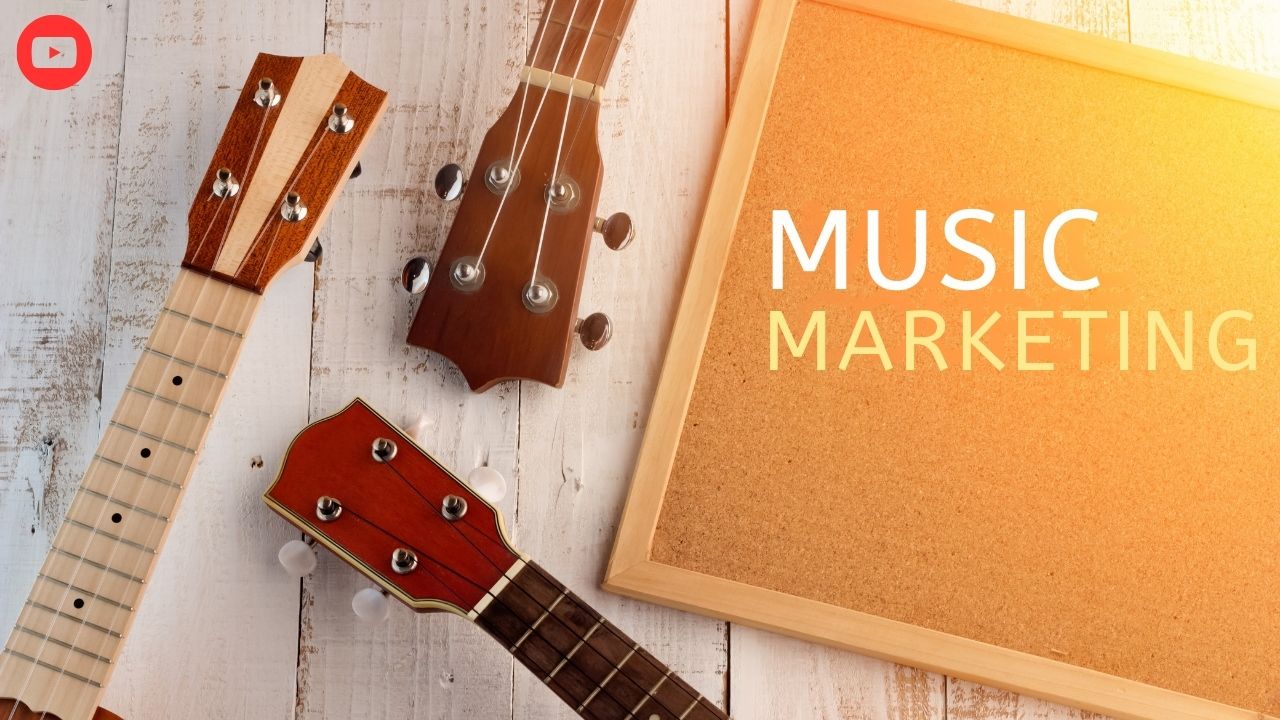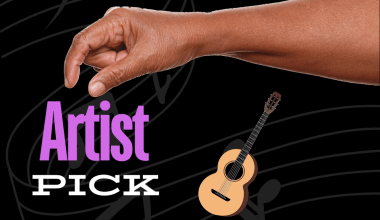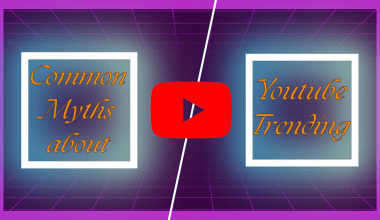YouTube has revolutionized the music industry, providing artists with a platform to reach a global audience. Role of YouTube in Music Marketing cannot be overstated, as it offers numerous opportunities for artists to promote their music, connect with fans, and generate revenue. In this comprehensive guide, we will explore how YouTube fits into your overall music marketing strategy, helping you maximize its potential to grow your music career.
Table of Contents
- Introduction
- Benefits of YouTube for Music Marketing
- Setting Up Your YouTube Channel
- Creating Engaging Content
- Optimizing Videos for SEO
- Engaging with Your Audience
- Utilizing YouTube Analytics
- Collaborations and Partnerships
- Monetization Strategies
- Promoting Your YouTube Channel
- Integrating YouTube with Other Marketing Channels
- Case Studies
- Tools and Resources for YouTube Success
- Common Mistakes to Avoid on YouTube
- Conclusion
Introduction
YouTube is one of the most powerful platforms for music marketing. It allows artists to upload videos, share their music, and engage with a global audience. The Role of YouTube in Music Marketing is pivotal, as it serves as a central hub for your online presence, helping you reach millions of potential fans.
Benefits of YouTube for Music Marketing
YouTube offers several benefits that make it an essential tool for music marketing:
- Global Reach: With over 2 billion logged-in monthly users, YouTube provides access to a vast audience.
- Visual Storytelling: Music videos, behind-the-scenes content, and live performances help you connect with fans on a deeper level.
- SEO Opportunities: Optimizing your videos for search can help you reach new audiences.
- Monetization: You can earn revenue through ads, YouTube Premium, and other monetization methods.
- Community Building: Engage with your audience directly through comments, live chats, and community posts.
- Analytics: Detailed insights into viewer behavior help you refine your content strategy.
Setting Up Your YouTube Channel
Creating a professional YouTube channel is the first step in leveraging the Role of YouTube in Music Marketing. Here’s how to get started:
- Create a YouTube Account: Use your Google account to set up your YouTube channel.
- Channel Branding: Choose a compelling channel name, profile picture, and banner image that reflect your brand.
- About Section: Write a detailed description about your music, including links to your website and social media profiles.
- Channel Trailer: Create a short trailer to introduce new visitors to your channel.
- Playlists: Organize your content into playlists to make it easier for viewers to find related videos.
- Social Media Links: Add links to your other social media profiles to drive traffic across your platforms.
Creating Engaging Content
Content is king on YouTube. To capitalize on the Role of YouTube in Music Marketing, create a variety of engaging videos:
- Music Videos: High-quality music videos are essential for showcasing your songs.
- Lyric Videos: These are popular among fans who want to sing along to your music.
- Behind-the-Scenes: Show the creative process behind your music and connect with fans on a personal level.
- Live Performances: Upload live concert footage to give fans a taste of your live shows.
- Vlogs: Share your journey, experiences, and updates with your audience.
- Tutorials: Teach your fans how to play your songs or discuss your music-making process.
- Q&A Sessions: Answer questions from your fans to build a stronger connection.
Optimizing Videos for SEO
To maximize the Role of YouTube in Music Marketing, it’s crucial to optimize your videos for search engines:
- Keywords: Use relevant keywords in your video titles, descriptions, and tags. The focus keyword “Role of YouTube in Music Marketing” should be included strategically.
- Thumbnails: Create eye-catching thumbnails that entice viewers to click on your videos.
- Descriptions: Write detailed descriptions with links to your social media, website, and other relevant content.
- Tags: Use relevant tags to help YouTube understand your video content.
- Closed Captions: Add subtitles to make your videos accessible and improve searchability.
- Engagement Signals: Encourage likes, comments, and shares to boost your video’s visibility.
- Video Length: Experiment with different video lengths to see what resonates best with your audience.
Engaging with Your Audience
Engagement is key to building a loyal fanbase on YouTube:
- Comments: Respond to comments on your videos to foster a sense of community.
- Live Streams: Host live Q&A sessions, performances, and behind-the-scenes streams to interact with fans in real time.
- Community Tab: Use the community tab to post updates, polls, and engage with your subscribers.
- Fan Interactions: Encourage fan interactions through contests, challenges, and shout-outs.
- Feedback: Use feedback from your audience to improve your content and address their interests.
Utilizing YouTube Analytics
YouTube Analytics provides valuable insights into your channel’s performance:
- Audience Demographics: Understand who your viewers are and where they’re from.
- Watch Time: Track which videos are keeping viewers engaged.
- Traffic Sources: Identify how viewers are finding your videos.
- Engagement Metrics: Monitor likes, shares, and comments to gauge audience interaction.
- Retention Rates: Analyze where viewers drop off to improve future content.
- Top Performing Videos: Focus on creating more content similar to your top-performing videos.
Collaborations and Partnerships
Collaborating with other artists and influencers can expand your reach:
- Feature Collaborations: Work with other musicians to create collaborative content.
- Influencer Partnerships: Partner with YouTube influencers to promote your music.
- Cross-Promotions: Promote each other’s channels to grow your audience base.
- Guest Appearances: Appear on other channels to tap into new audiences.
- Remixes and Covers: Collaborate on remixes or covers of popular songs to attract more viewers.
Monetization Strategies
Monetizing your YouTube channel is a significant aspect of the Role of YouTube in Music Marketing:
- Ad Revenue: Earn money from ads displayed on your videos.
- YouTube Premium: Receive a share of revenue from YouTube Premium subscribers who watch your content.
- Super Chat: Monetize live streams through Super Chat donations.
- Merchandise Shelf: Sell your merchandise directly from your YouTube channel.
- Sponsored Content: Partner with brands for sponsored videos.
- Crowdfunding: Use platforms like Patreon to receive support from your fans.
- Affiliate Marketing: Promote products and earn a commission for sales generated through your links.
Promoting Your YouTube Channel
Promoting your YouTube channel is essential to attract more viewers:
- Social Media: Share your videos on all your social media platforms.
- Email Marketing: Include your latest YouTube videos in your newsletters.
- Collaborations: Collaborate with other YouTubers to reach new audiences.
- Paid Advertising: Use YouTube ads to promote your channel and videos.
- Contests and Giveaways: Host contests and giveaways to increase engagement and attract new subscribers.
- SEO: Ensure your channel and videos are optimized for search engines.
- Engage with Communities: Participate in relevant online communities and forums.
Integrating YouTube with Other Marketing Channels
Integrating YouTube with your other marketing channels can enhance your overall strategy:
- Website Integration: Embed your YouTube videos on your website.
- Social Media Integration: Share YouTube links on your social media profiles.
- Music Platforms: Promote your YouTube channel on Spotify, Apple Music, and other streaming platforms.
- Cross-Promotion: Use your YouTube channel to promote your other marketing channels and vice versa.
- Consistent Branding: Maintain consistent branding across all your channels for a unified presence.
- Collaborative Campaigns: Run collaborative campaigns across multiple platforms to amplify your reach.
Case Studies
Examining successful case studies can provide inspiration and insights:
- Justin Bieber: Discovered on YouTube, Bieber’s early uploads showcased his talent and helped him gain a massive following.
- BTS: The K-pop group uses YouTube to connect with fans globally, upload behind-the-scenes content, and share their music videos.
- Billie Eilish: Eilish’s unique content and engaging videos have helped her build a loyal fanbase on YouTube.
- Marshmello: The DJ and producer uses YouTube to share music videos, behind-the-scenes content, and collaborations, growing his fanbase significantly.
- Tones and I: The Australian singer-songwriter used YouTube to share her breakout hit “Dance Monkey,” which went viral and propelled her to international fame.
Tools and Resources for YouTube Success
- Thumbnail Makers: Tools like Canva and Adobe Spark help you create eye-catching thumbnails.
- Analytics Tools: YouTube Studio provides in-depth analytics, but tools like Google Analytics can offer additional insights.
- Social Media Management: Tools like Hootsuite and Buffer can help you schedule and manage your social media posts promoting your YouTube videos.
- Music Distribution Services: Platforms like Deliver My Tune, DistroKid, and CD Baby can distribute your music to YouTube and other streaming services.
- Graphic Design Tools: Adobe Photoshop and Illustrator can help create professional graphics for your channel art and video thumbnails.
- Live Streaming Software: OBS Studio and Streamlabs are popular tools for live streaming your performances and Q&A sessions.
Common Mistakes to Avoid on YouTube
While leveraging the Role of YouTube in Music Marketing, it’s essential to avoid common mistakes that can hinder your growth:
- Inconsistent Upload Schedule: Regular uploads help keep your audience engaged. Inconsistent posting can lead to a decline in viewer interest.
- Ignoring SEO: Not optimizing your videos for search can result in lower visibility and fewer views.
- Poor Quality Content: Low-quality audio or video can turn off viewers. Invest in good equipment and editing software.
- Lack of Engagement: Failing to interact with your audience can create a disconnect. Respond to comments and engage with your community.
- Overlooking Analytics: Ignoring YouTube Analytics means missing out on valuable insights that can help improve your content strategy.
- Not Promoting Videos: Simply uploading videos isn’t enough. Promote your content across all your platforms to drive traffic to your channel.
- Neglecting Thumbnails and Titles: Thumbnails and titles are the first things viewers see. Make sure they are compelling and relevant to the content.
- Ignoring Copyright Rules: Using copyrighted material without permission can result in strikes against your channel or removal of your videos.
- Not Collaborating: Collaboration can significantly expand your reach. Don’t miss out on opportunities to work with other artists and influencers.
Conclusion
The Role of YouTube in Music Marketing is indispensable. By creating engaging content, optimizing for SEO, interacting with your audience, and utilizing YouTube’s features, you can effectively promote your music, build a loyal fanbase, and grow your music career. YouTube’s global reach, powerful analytics, and numerous monetization options make it an essential platform for any artist looking to make an impact in the music industry.
Remember to regularly update your channel with fresh content, engage with your viewers, and leverage collaborations to expand your reach. By integrating YouTube with your overall music marketing strategy, you can ensure a cohesive and effective approach to promoting your music and growing your career.
Final Thoughts
Harnessing the full potential of YouTube requires dedication and strategic planning. Whether you’re an independent artist or part of a band, YouTube offers endless opportunities to showcase your talent, connect with fans, and achieve your musical goals. By understanding the Role of YouTube in Music Marketing and implementing the strategies discussed in this guide, you can position yourself for long-term success in the competitive world of music.
Engage with your audience, stay consistent, and continually learn from your analytics to refine your approach. With the right strategies in place, YouTube can become a cornerstone of your music marketing efforts, driving growth, and increasing your reach across the globe.
For further reading, explore these related articles:
For additional resources on music marketing and distribution, visit Deliver My Tune.






